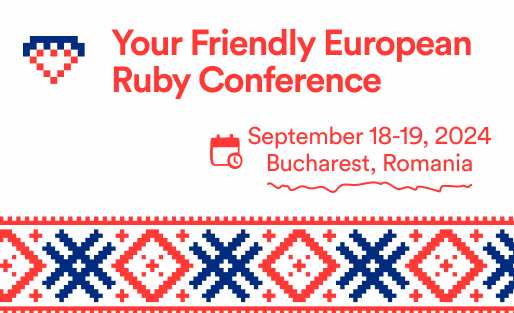Resource tools
Similar to adding custom fields to a resource, you can add custom tools. A custom tool is a partial added to your resource's Show and Edit views.
Generate a resource tool
Run bin/rails generate avo:resource_tool post_info. That will create two files. The configuration file app/avo/resource_tools/post_info.rb and the partial file app/views/avo/resource_tools/_post_info.html.erb.
The configuration file holds the tool's name and the partial path if you want to override it.
class PostInfo < Avo::BaseResourceTool
self.name = "Post info"
# self.partial = "avo/resource_tools/post_info"
endThe partial is ready for you to customize further.
<div class="flex flex-col">
<%= render Avo::PanelComponent.new title: "Post info" do |c| %>
<% c.with_tools do %>
<%= a_link('/avo', icon: 'heroicons/solid/academic-cap', style: :primary) do %>
Dummy link
<% end %>
<% end %>
<% c.with_body do %>
<div class="flex flex-col p-4 min-h-24">
<div class="space-y-4">
<h3>🪧 This partial is waiting to be updated</h3>
<p>
You can edit this file here <code class='p-1 rounded bg-gray-500 text-white text-sm'>app/views/avo/resource_tools/post_info.html.erb</code>.
</p>
<p>
The resource tool configuration file should be here <code class='p-1 rounded bg-gray-500 text-white text-sm'>app/avo/resource_tools/post_info.rb</code>.
</p>
<%
# In this partial, you have access to the following variables:
# tool
# @resource
# @resource.model
# form (on create & edit pages. please check for presence first)
# params
# Avo::App.context
# current_user
%>
</div>
</div>
<% end %>
<% end %>
</div>
Partial context
You might need access to a few things in the partial.
You have access to the tool, which is an instance of your tool PostInfo, and the @resource, which holds all the information about that particular resource (view, model, params, and others), the params of the request, the Avo::App.context and the current_user. That should give you all the necessary data to scope out the partial content.
Tool visibility
The resource tool is default visible on the Show view of a resource. You can change that using the visibility options (show_on, only_on).
# app/avo/resources/post_resource.rb
class PostResource < Avo::BaseResource
tool PostInfo, show_on: :edit
endUsing path helpers
Because you're in a Rails engine, you will have to prepend the engine object to the path.
For Avo paths
Instead of writing resources_posts_path(1) you have to write avo.resources_posts_path(1).
For the main app paths
When you want to reference paths from your main app, instead of writing posts_path(1), you have to write main_app.posts_path.
Add custom fields on forms
From Avo 2.12
You might want to add a few more fields or pieces of functionality besides the CRUD-generated fields on your forms. Of course, you can already create new custom fields to do it in a more structured way, but you can also use a resource tool to achieve more custom behavior.
You have access to the form object that is available on the new/edit pages on which you can attach inputs of your choosing. You can even achieve nested form functionality.
You have to follow three steps to enable this functionality:
- Add the inputs in a resource tool and enable the tool on the form pages
- Tell Avo which
paramsit should permit to write to the model - Make sure the model is equipped to receive the params
In the example below, we'll use the FishResource, add a few input fields (they will be a bit unstyled because this is not the scope of the exercise), and do some actions with some of them.
We first need to generate the tool with bin/rails g avo:resource_tool fish_information and add the tool to the resource file.
class FishResource < Avo::BaseResource
tool FishInformation, show_on: :forms
endIn the _fish_information.html.erb partial, we'll add a few input fields. Some are directly on the form, and some are nested with form.fields_for.
The fields are:
fish_typeas a text inputpropertiesas a multiple text input which will produce an array in the back-endinformationas nested inputs which will produce aHashin the back-end
<!-- _fish_information.html.erb -->
<div class="flex flex-col">
<%= render Avo::PanelComponent.new(title: @resource.model.name) do |c| %>
<% c.with_tools do %>
<%= a_link('/admin', icon: 'heroicons/solid/academic-cap', style: :primary) do %>
Primary
<% end %>
<% end %>
<% c.with_body do %>
<div class="flex flex-col p-4 min-h-24">
<div class="space-y-4">
<% if form.present? %>
<%= form.label :fish_type %>
<%= form.text_field :fish_type, value: 'default type of fish', class: input_classes %>
<br>
Next, we need to tell Avo and Rails which params are welcomed in the create/update request. We do that using the extra_params option on the FishResource. Avo's internal implementation is to assign the attributes you specify here to the underlying model (model.assign_attributes params.permit(extra_params)).
class FishResource < Avo::BaseResource
self.extra_params = [:fish_type, :something_else, properties: [], information: [:name, :history]]
tool FishInformation, show_on: :forms
endThe third step is optional. You must ensure your model responds to the params you're sending. Our example should have the fish_type, properties, and information attributes or setter methods on the model class. We chose to add setters to demonstrate the params are called to the model.
class Fish < ApplicationRecord
self.inheritance_column = nil # required in order to use the type DB attribute
def fish_type=(value)
self.type = value
end
def properties=(value)
# properties should be an array
puts ["properties in the Fish model->", value].inspect
end
def information=(value)
# properties should be a hash
puts ["information in the Fish model->", value].inspect
end
endIf you run this code, you'll notice that the information.information_age param will not reach the information= method because we haven't allowed it in the extra_params option.
 Friendly.rb - Your friendly European Ruby Conference
Friendly.rb - Your friendly European Ruby Conference